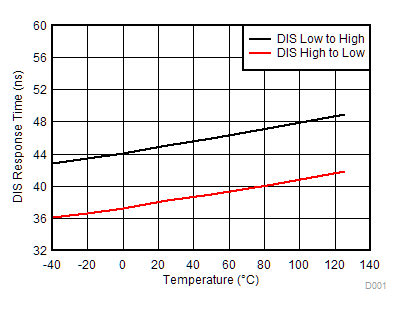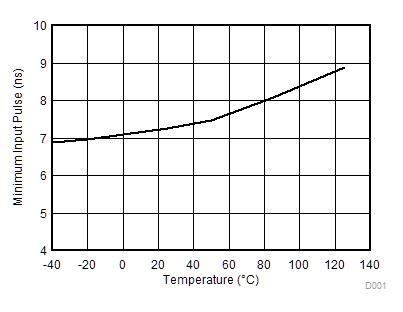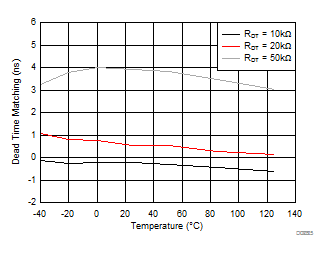JAJSEW6B February 2018 – February 2024 UCC21222
PRODUCTION DATA
- 1
- 1 特長
- 2 アプリケーション
- 3 概要
- 4 Pin Configuration and Functions
-
5 Specifications
- 5.1 Absolute Maximum Ratings
- 5.2 ESD Ratings
- 5.3 Recommended Operating Conditions
- 5.4 Thermal Information
- 5.5 Power Ratings
- 5.6 Insulation Specifications
- 5.7 Safety-Related Certifications
- 5.8 Safety-Limiting Values
- 5.9 Electrical Characteristics
- 5.10 Switching Characteristics
- 5.11 Thermal Derating Curves
- 5.12 Typical Characteristics
- 6 Parameter Measurement Information
- 7 Detailed Description
-
8 Application and Implementation
- 8.1 Application Information
- 8.2
Typical Application
- 8.2.1 Design Requirements
- 8.2.2
Detailed Design Procedure
- 8.2.2.1 Custom Design With WEBENCH® Tools
- 8.2.2.2 Designing INA/INB Input Filter
- 8.2.2.3 Select Dead Time Resistor and Capacitor
- 8.2.2.4 Select External Bootstrap Diode and its Series Resistor
- 8.2.2.5 Gate Driver Output Resistor
- 8.2.2.6 Estimating Gate Driver Power Loss
- 8.2.2.7 Estimating Junction Temperature
- 8.2.2.8 Selecting VCCI, VDDA/B Capacitor
- 8.2.2.9 Application Circuits with Output Stage Negative Bias
- 8.2.3 Application Curves
- 9 Power Supply Recommendations
- 10Layout
- 11Device and Documentation Support
- 12Revision History
- 13Mechanical, Packaging, and Orderable Information
5.12 Typical Characteristics
VDDA = VDDB = 12 V, VCCI = 3.3 V or 5.0 V, DT pin tied to VCCI, TA = 25°C, CL = 0 pF unless otherwise noted.
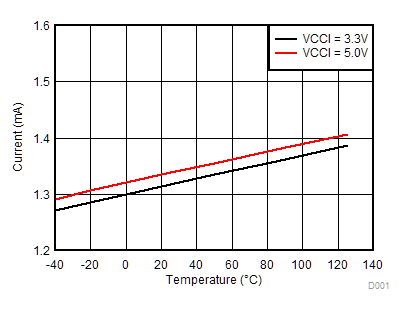
| No Load | INA = INB = GND |
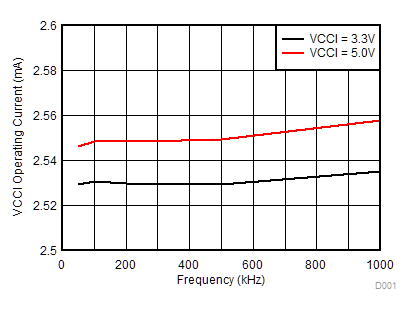
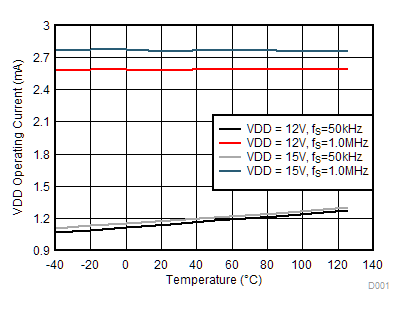
| No Load |
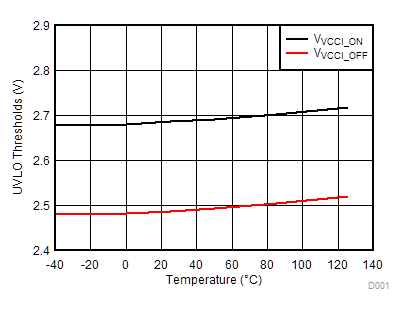
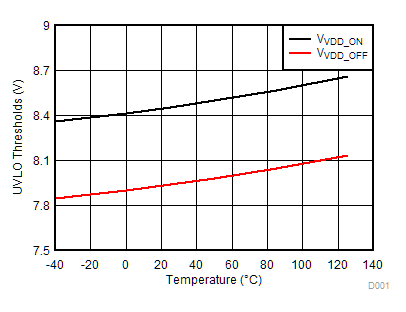
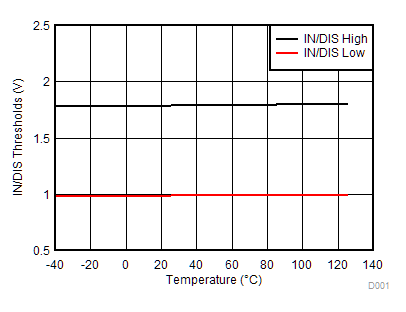
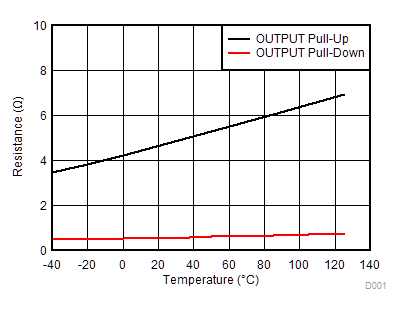
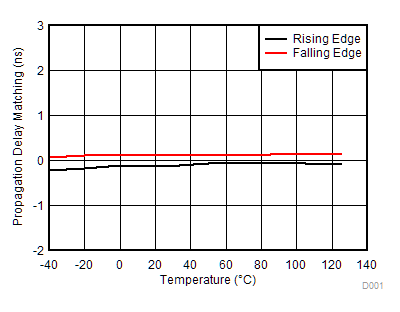
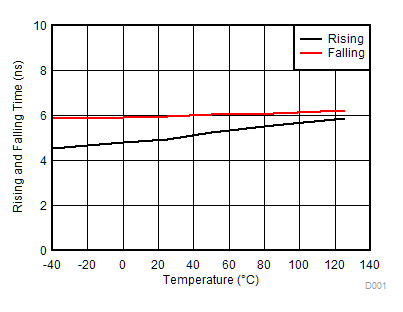
| CL = 1.8 nF |
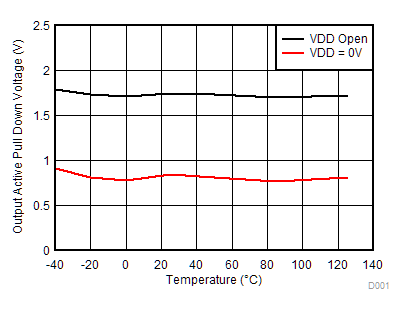
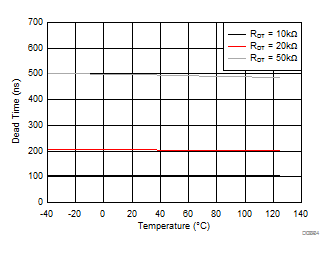
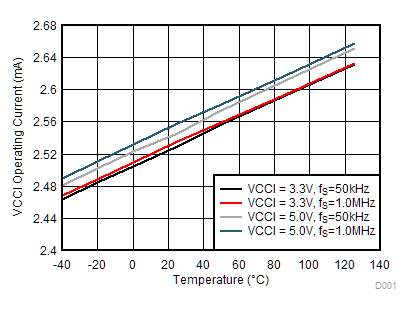
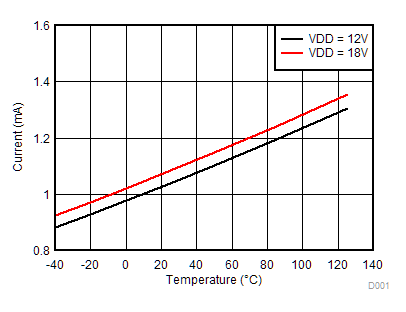
| No Load | INA = INB = GND |
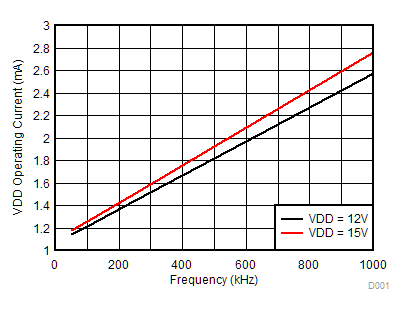
| No Load | INA and INB both switching |
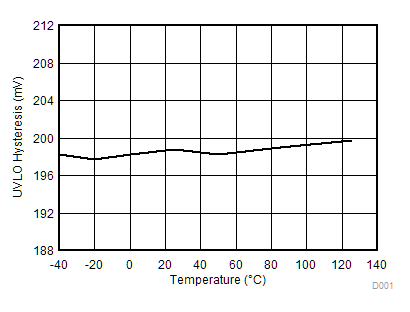
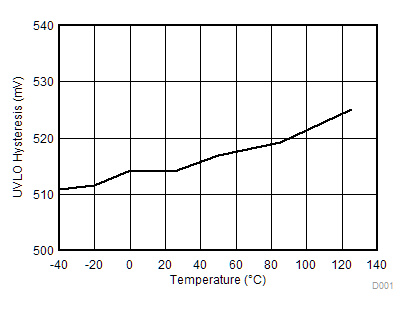
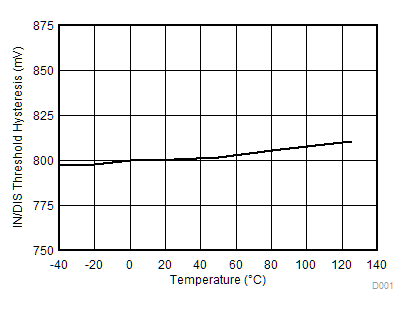

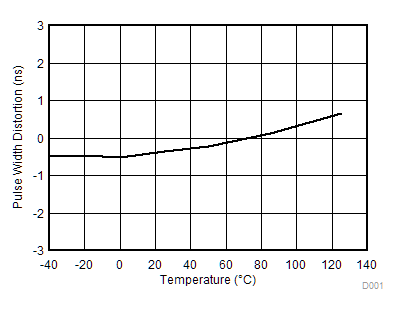
| tPDLH – tPDHL |
